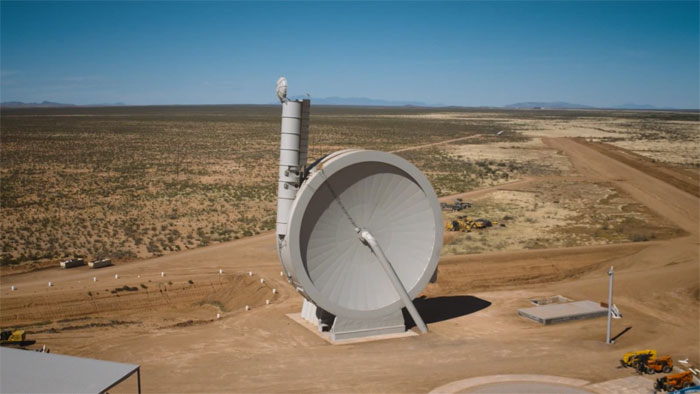US company successfully tested a rocket-free spaceship launch system
The US company has successfully tested a new system consisting of a vacuum chamber that can rotate the launch vehicle to supersonic speeds and then release it into the atmosphere.
For more than half a century, humans have launched spacecraft into space with the help of rockets. However, American startup SpinLaunch is looking for a different method. The company develops a launch system that is touted as the world's first dynamic space launch system.
On October 22, SpinLaunch completed its first test launch at the US Spaceport in New Mexico. The test vehicle successfully ejected from the Sub-Orbital Accelerator and reached supersonic speeds , then recovered for reuse.
SpinLaunch has been developing a new launch system since 2015 with the prospect that satellites and spacecraft could escape Earth's atmosphere with zero emissions. The company was planning to accomplish the goal with the help of a giant electric accelerator. The machine can be 4 times more fuel-efficient and 10 times more cost-effective than traditional rocket launch methods, and can launch multiple devices into orbit each day.
Initially, SpinLaunch used a Suborbital Accelerator. The machine consists of an upright disk-shaped vacuum chamber, slightly taller than the Statue of Liberty. It uses a long rod made of carbon fiber to spin the launch vehicle to speeds of more than 8,000km/h, many times the speed of sound. The launch vehicle is then released through the launch tube and into the atmosphere.

SpinLaunch's first launch test in New Mexico, USA, on October 22.
SpinLaunch is developing a larger version called the L100 Orbital Mass Accelerator . The machine will operate on the same principle and can launch satellites weighing 200 kg. Advances in electronics have enabled relatively small capacitors, chips and resistors to become more resilient and resistant to the forces of a rapidly rotating chamber, says SpinLaunch.
The method of launching ships into orbit without rockets has also been studied before. For example, the US and Canadian Project Harp of the 1960s aimed to launch vehicles into orbit with a giant space gun.
Experts still need to do more research to realize rocket-free launches. However, SpinLaunch took a new step last month when it successfully tested the new system. The company plans to conduct more test launches in 2022 with different vehicles and speeds. The airline plans to make its first customer-service launch by the end of 2024.
- NASA has successfully tested the most powerful rocket on the planet
- SpaceX successfully launched a spacecraft to transport people to the ISS
- The Vector space company first tested the small rocket successfully
- New Zealand: Successfully tested the Electron boosters
- NASA was not satisfied with the launch of SpaceX's new rocket
- Spaceship brings toaster on ISS station
- SpaceX rocket suddenly exploded just before the launch time
- Elon Musk tested the most difficult rocket launch ever, broadcast live on YouTube
- Europe has successfully launched 2 telecommunications satellites
- Russia 'abandoned' Proton-M rocket
- Launch two satellites with a rocket
- Russia reused Soyuz after its failed launch
 Van Allen's belt and evidence that the Apollo 11 mission to the Moon was myth
Van Allen's belt and evidence that the Apollo 11 mission to the Moon was myth The levels of civilization in the universe (Kardashev scale)
The levels of civilization in the universe (Kardashev scale) Today Mars, the sun and the Earth are aligned
Today Mars, the sun and the Earth are aligned The Amazon owner announced a secret plan to build a space base for thousands of people
The Amazon owner announced a secret plan to build a space base for thousands of people